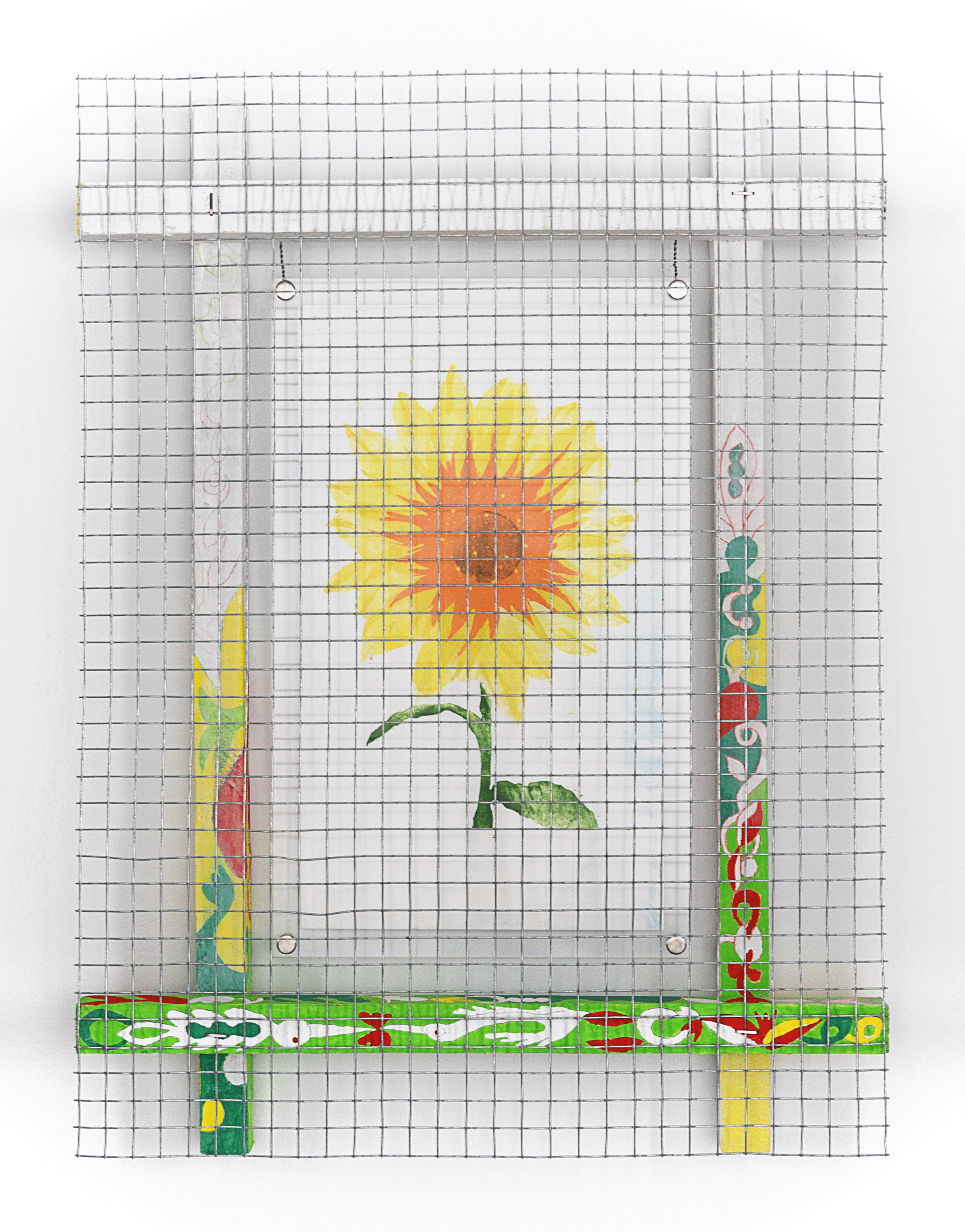Variation #24
By Aurora De Armendi Sobrino
Print: Artist Proof 5/10
Frame: wood, Ornek-inspired artwork, metal fencing
The indigenous people of Crimea are not Ukrainian, nor are they Russian: they are Crimean Tatars, a Turkic people descended from a mix of nomadic tribes and ancient cultures. With their own language, and a history shaped by Islam, the Crimean Tatars have a unique identity that diverges significantly from their Russian rulers.
Originally a Khanate under the Golden Horde and later aligned with the Ottoman Empire, the Crimean Tatars connection to Russia emerged from forced subjugation. The peninsula was illegally occupied and annexed by the Russian Empire in the late 1700s, marking beginning of a long history of violence against the Crimean Tatars. Over the next century, campaigns of subjugation and repression forced hundreds of thousands of them into exile, and by the dawn of the 20th century, many have been expelled or displaced
Their plight worsened after the Russian Revolution. By 1939, the Crimean Tatar population had plummeted—from almost 100% to just under 20%—but worse was yet to come. In 1944, using the Nazi occupation as a pretext, the Soviet Union forcibly deported the remaining Crimean Tatars to Central Asia. This ethnic cleansing and cultural genocide, known as the Sürgünlik in Crimean, unfolded in just three days in May, and resulted in the deaths of thousands. Not a single Crimean Tatar was allowed to stay. They were not permitted to return until the final years of the Soviet Union.
When Ukraine gained independence, the Crimean Tatars began repatriating to their homeland. This sometimes caused tensions, particularly with native Russians whose families had settled in Crimea after the Sürgünlik. Nevertheless, the Ukrainian government welcomed their return and formally recognized them as an indigenous people of the Ukraine. At the time of Russia’s occupation of Crimea in 2014, approximately 300,000 Crimean Tatars had returned to Crimea, making up about 13% of the population.(A)
Russia’s current occupation of Crimea has been a humanitarian disaster for the Crimean Tatars. Putin’s regime has adopted many of the oppressive tactics used by Russia’s past despotic regimes: thousands of Crimean Tatars have been forcibly displaced and placed into penal colonies, while over 200,00 Russian citizens have been relocated to Crimea to replace them. Crimean Tatars and Ukrainian languages have been suppressed throughout the region, and more than two-thirds of current political prisoners from Crimea are Crimean Tatars. Those who managed to flee have now been living as refugees for over a decade.(B)
For Putin to claim that Crimea and its people are “Russian” is an blatant attempt to erase the centuries of violence inflected upon the indigenous Crimean Tatars by the various Russian regimes. If the world capitulates to Russia, the Crimean Tatars face total extinction.
A) For more on the illegal occupation of Crimea, see Variation #5.
B) For more on refugees, see Variation #12.
See below for further reading and background.
The Historical Background, Crimea Platform.
Explaining Ukraine: Who are the Crimean Tatars?, The Kyiv Independent.
Deportation of the Crimean Tatars, Wikipedia.
The Russian Federation’s Ongoing Aggression Against Ukraine, U.S Mission to the OSCE, 07 Mar 24.
Commissioner draws attention to the Crimean Tatars’ struggle for human rights, Commissioner for Human Rights, 18 Apr 24.
The Suffering of Crimea’s Tatars, New Lines Magazine, 12 May 22.
The Lives and Hopes of Crimean Tatars after the 2014 Annexation, ZOiS, 18 Mar 24.
Under Russian Occupation, Crimean Tatars Face a Campaign of Erasure, Open Society Foundations, 10 May 24.


